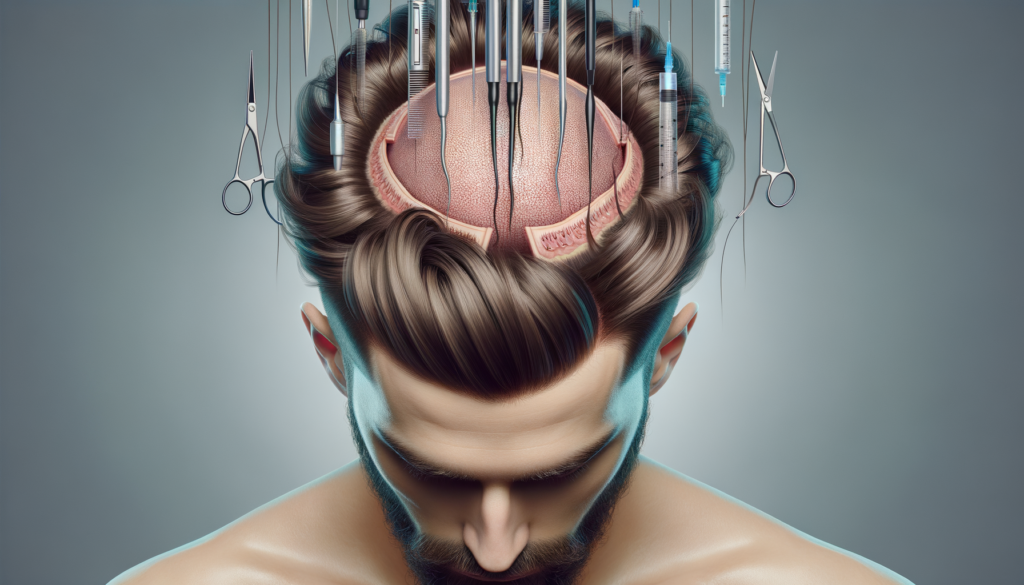The Technology Blog

Modern Hair Transplantation Techniques in the UK: Achieving Natural-Looking Results
The Evolution of Hair Transplantation Techniques
Hair transplantation has come a long way since its inception, evolving into a sophisticated procedure that offers individuals a chance to regain their hair with natural-looking results. Initially, hair transplantation involved the use of large grafts, which often resulted in an unnatural appearance. However, advancements in technology and technique have transformed this field significantly.
Modern hair transplantation techniques in the UK are characterized by precision and minimally invasive methods. Two of the most prominent techniques are Follicular Unit Transplantation (FUT) and Follicular Unit Extraction (FUE). FUT involves removing a strip of scalp from a donor area, usually the back of the head, and dissecting it into individual follicular units. In contrast, FUE involves extracting individual hair follicles directly from the donor area. Both methods have their unique advantages and are chosen based on the patient’s needs and the surgeon’s expertise.
The focus on achieving natural-looking results has led to the development of techniques that mimic the natural hair growth pattern. Surgeons now consider factors such as hairline design, density, and direction of hair growth to ensure the transplanted hair blends seamlessly with the existing hair. This attention to detail is crucial for achieving a result that is virtually indistinguishable from natural hair.
Innovative Techniques for Natural Results
In the UK, the pursuit of natural results in hair transplantation has led to innovative techniques that enhance the overall outcome. One such technique is Direct Hair Implantation (DHI), a variation of FUE, where hair follicles are implanted directly into the recipient area without the need for creating incisions beforehand. This method reduces handling of the follicles and minimizes trauma, resulting in a higher survival rate of transplanted hair.
Another innovative approach is the use of robotic assistance in hair transplantation. Robotic systems can enhance precision in follicle extraction and placement, thereby improving the efficiency of the procedure. These systems are equipped with advanced imaging capabilities that allow for accurate mapping of the donor area, ensuring optimal use of available follicles.
In addition to scalp hair restoration, modern techniques are also being applied to other areas such as eyebrows. Eyebrow transplantation has gained popularity as it offers a solution for individuals with sparse or thinning eyebrows. The procedure involves meticulous placement of hair follicles to achieve the desired shape and density, often transforming the facial appearance significantly.
- Direct Hair Implantation (DHI) for reduced trauma
- Robotic assistance for enhanced precision
- Eyebrow transplantation for aesthetic enhancement
The Future of Hair Transplantation in the UK
The future of hair transplantation in the UK looks promising, with continuous advancements in technology and technique. Researchers are exploring the potential of stem cell therapy and hair cloning as revolutionary approaches to hair restoration. These methods aim to overcome the limitations of donor hair availability by generating new hair follicles from existing ones.
Moreover, personalized treatment plans are becoming increasingly popular. Surgeons are now considering individual factors such as hair type, age, and lifestyle when planning hair transplantation procedures. This personalized approach ensures that the results are tailored to the patient’s specific needs and expectations, enhancing satisfaction and long-term success.
As awareness about hair transplantation grows, more individuals are seeking these procedures not just for aesthetic reasons but also for the psychological benefits. Restoring hair can significantly boost self-esteem and confidence, impacting various aspects of an individual’s life positively.
- Stem cell therapy and hair cloning for future advancements
- Personalized treatment plans for tailored results
- Psychological benefits of hair restoration









